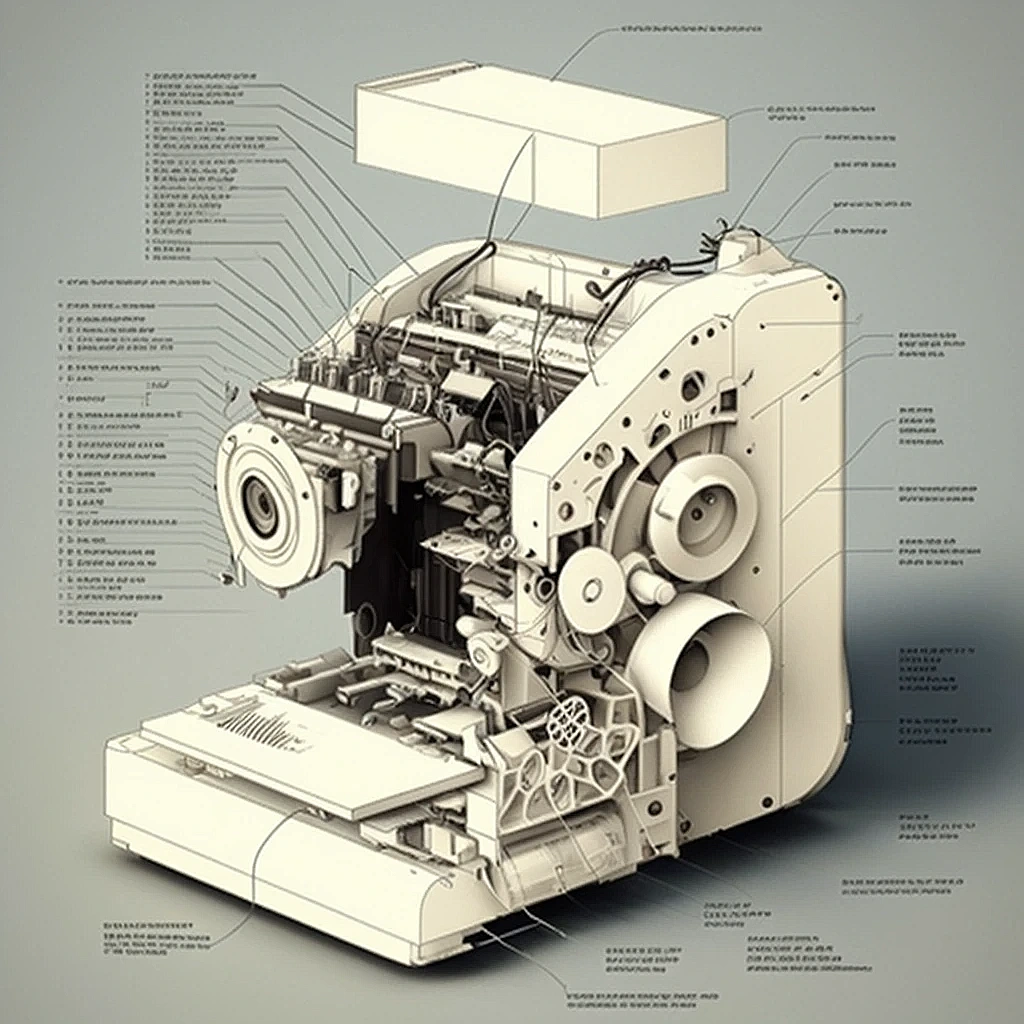In a groundbreaking development that promises to reshape the landscape of publishing, education, and art distribution, tech startup Dimensional Dynamics has unveiled its revolutionary 3D fax machine, the Teletypis X1. This cutting-edge device combines the simplicity of traditional fax technology with advanced printing capabilities, allowing users to transmit books, magazines, spiral notebooks, and even framed art across vast distances in a matter of minutes—all using the standard toner paper we know and love.

The Teletypis X1 3D fax machine works by scanning printed materials using advanced laser technology, creating a detailed digital model of their structure, texture, and composition. This digital blueprint is then transmitted via standard telephone lines to a receiving Teletypis X1 unit, which uses a sophisticated array of toner cartridges and paper-handling mechanisms to recreate the item with astonishing accuracy.
“We’ve essentially created a teleporter for printed materials, which uses only ubiquitous toner paper, and without the need for exotic 3D printing technology,” says Dr. Amelia Voxel, lead engineer at Dimensional Dynamics. “The Teletypis X1 can transmit anything from textbooks to limited edition art prints, opening up a world of possibilities for publishers, educators, and art enthusiasts alike—all while using the familiar toner paper found in offices worldwide.”
We’ve essentially created a teleporter for printed materials, which uses only ubiquitous toner paper…
Dr Amelia Voxel
At the heart of this revolutionary technology lies the newly developed HyperZIP+ signal compression algorithm. Building upon the foundations of existing data compression techniques, HyperZIP+ allows for the transmission of incredibly detailed print models over standard communication channels. “HyperZIP+ is the key that unlocks the potential of the Teletypis,” explains Dr. Voxel. “It compresses the massive amount of data required for high-fidelity printing into a manageable stream, making it possible to send complex documents and images over conventional phone lines.”
The implications of this technology are far-reaching. Libraries could instantly receive rare books from institutions around the world, eliminating the need for inter-library loans. Students could print textbooks and notebooks on demand, reducing the cost and environmental impact of traditional publishing. Art galleries could share exhibitions globally, allowing art lovers to experience masterpieces in the comfort of their own homes.
The Teletypis X1 boasts an impressive array of features that set it apart from traditional printers and fax machines:
- Multi-toner printing: The device uses up to 12 different toner cartridges to recreate a vast spectrum of colors and shades, ensuring accurate reproduction of even the most vibrant art prints.
- Texture simulation: Proprietary micro-embossing technology allows the Teletypis to recreate various paper textures, from the smooth feel of a magazine page to the rough surface of watercolor paper.
- Dynamic binding: For books and notebooks, the Teletypis X1 can accurately simulate various binding methods by cleverly folding and stapling the toner paper as it prints.
- Frame illusion: When transmitting framed art, the device prints trompe l’oeil frames with stunning detail, creating the illusion of ornate wooden or metal frames.
Early adopters of the Teletypis X1 have reported astounding results. Sarah Chen, a rare book collector in San Francisco, used the device to “fax” a first edition of a classic novel from a library in London. “The quality is incredible,” Chen marvels. “Every detail, from the aged paper look to the slightly faded ink, is perfectly reproduced on standard toner paper. It’s almost indistinguishable from the original.”
Despite its groundbreaking capabilities, the Teletypis X1 is not without limitations. Currently, the maximum size for books and art prints is restricted to 24 by 36 inches, and certain specialty finishes, such as metallic or glossy effects, can only be approximated. Additionally, the toner and paper costs for transmitting and printing larger items can be substantial, leading to concerns about the technology’s economic viability for high-volume use.
Critics have also raised questions about the potential misuse of Teletypis technology, particularly in relation to copyright infringement and the reproduction of valuable art pieces. Dimensional Dynamics has responded by implementing robust security measures, including blockchain-based authentication and an AI-powered content filter to prevent the unauthorized transmission of copyrighted materials.
As the Teletypis X1 prepares to hit the market later this year, with a projected retail price of $49,999, industry experts are already speculating about future applications. Some envision a world where Teletypis machines are as commonplace as photocopiers, fundamentally altering how we consume and share printed materials and blurring the lines between original and reproduced media.
While only time will tell if the Teletypis will live up to its revolutionary promise, one thing is certain: the days of waiting anxiously for that rare book or limited edition print to arrive in the mail may soon be a thing of the past. The future of printed material transmission is here, and it’s using the toner paper we all know and trust.